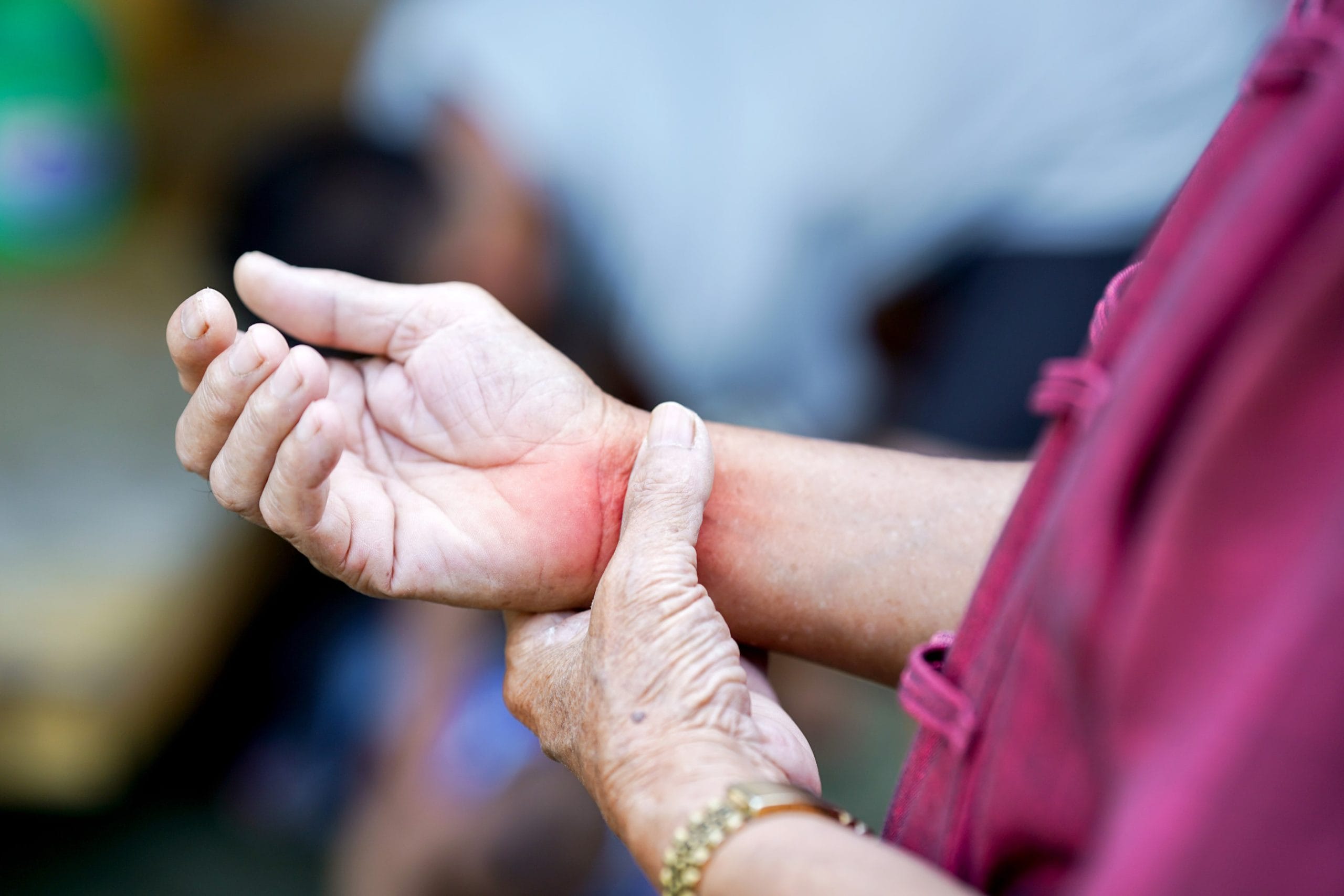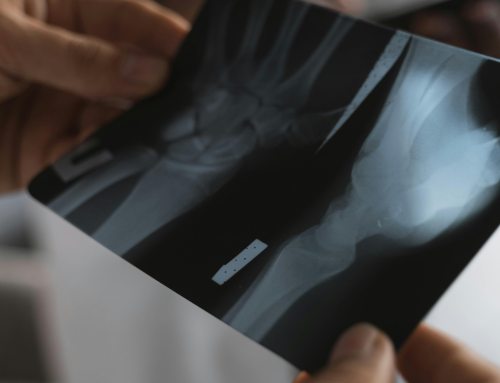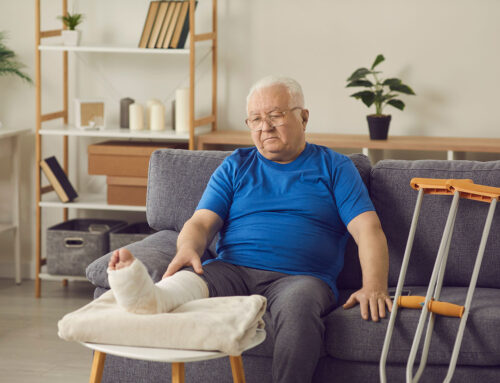Osteoporosis-related fractures can be life-altering, affecting mobility, independence, and overall well-being. These fractures, which occur due to reduced bone density and strength, are more than just injuries. They present long recovery times, increased risks of complications, and challenges in maintaining daily life.
Understanding why these fractures happen, why they heal more slowly, and what advanced treatments like Low-Intensity Pulsed Ultrasound (LIPUS) can do to accelerate recovery is essential for patients, caregivers, and healthcare professionals.
In this guide, we’ll explore the causes of osteoporosis-related fractures, the obstacles to healing, and how innovative therapies like LIPUS can make recovery faster and more effective.

What Causes Osteoporosis-Related Fractures?
Osteoporosis fractures occur when bone density and strength decline, making bones fragile and more prone to breaks—even from minor falls or everyday movements. Because osteoporosis develops silently and progressively, many people don’t realize they are at risk until a fracture occurs.
Several key factors contribute to osteoporosis-related bone breaks:
- Decreased Bone Mineral Density (BMD): Osteoporosis reduces the mineral content in bones, compromising their ability to withstand stress.
- Age-Related Bone Loss: Bone density naturally decreases with age, particularly in postmenopausal women, due to lower estrogen levels.
- Falls & Balance Issues: Weak bones, coupled with poor balance, muscle weakness, or slower reflexes, significantly increase the likelihood of fractures from even minor falls.
- High-Risk Fracture Sites: Osteoporotic fractures most commonly occur in the hips, spine, and wrists—areas that endure constant stress and are more susceptible to impact-related injuries.
The Challenges of Healing Osteoporosis Fractures
Healing from an osteoporosis-related fracture is often slower and more complex than healing fractures in individuals with healthy bones. Several factors contribute to this challenge:
- Slower Bone Regeneration: Osteoporotic bones have a reduced ability to repair themselves, leading to a prolonged healing process.
- Higher Risk of Complications: Fractures in osteoporotic patients are more likely to experience delayed union (slow healing) or non-union (failure to heal properly), increasing the need for specialized treatment.
- Impact on Mobility: Hip and spine fractures can significantly limit mobility, often requiring extended bed rest or assistive devices. This inactivity can lead to muscle loss, joint stiffness, and a higher risk of future falls.
- Chronic Pain & Quality of Life: Osteoporotic fractures often cause persistent pain, which can affect daily activities, independence, and mental well-being.
These challenges emphasize the need for effective, science-backed interventions to accelerate healing and restore mobility—helping osteoporosis patients return to their daily lives with confidence.
Lifestyle Tips for Supporting Healing
Recovering from an osteoporosis-related fracture requires more than just medical treatment. Your daily habits play a crucial role in strengthening bones, restoring mobility, and preventing future fractures. By making intentional lifestyle adjustments, you can accelerate healing and improve long-term bone health.
Consider these essential recovery strategies:
- Nourish Your Bones: Ensure your diet includes calcium, vitamin D, and protein, all essential for bone repair and strength.
- Stay Active—Safely: Engage in low-impact exercises like walking, swimming, or yoga to maintain mobility and prevent muscle loss.
- Minimize Fall Risks: Use assistive devices if needed, and make your living environment safer by removing tripping hazards, improving lighting, and adding handrails where necessary.
- Follow Your Doctor’s Advice: Adhere to prescribed medications, physical therapy, and bone-strengthening treatments to optimize healing and prevent complications.
By supporting your body with the right lifestyle choices, you can recover more effectively and reduce the risk of future fractures.
The Role of LIPUS in Healing Osteoporosis Fractures
For individuals recovering from osteoporosis-related fractures, healing can be slow and unpredictable. Low-Intensity Pulsed Ultrasound (LIPUS) offers a non-invasive, clinically proven solution to accelerate the bone repair process. This gentle yet effective technology, used in the Melmak LIPUS device, stimulates natural healing at the fracture site, helping patients regain mobility and reduce recovery time.
Here’s how LIPUS therapy supports faster, more effective fracture healing:
1. Stimulates Bone Regeneration
LIPUS delivers targeted ultrasound waves to the fracture site, activating bone cells and encouraging the production of essential proteins needed for healing. This process enhances bone regeneration, making it particularly valuable for osteoporotic fractures.
2. Boosts Blood Flow to the Fracture Site
By improving microcirculation around the affected area, LIPUS ensures that oxygen and vital nutrients reach the fracture site more efficiently. Better blood flow helps reduce healing delays and supports stronger bone formation.
3. Accelerates Healing Time
Clinical studies show that LIPUS can speed up fracture healing by promoting cellular repair and reducing inflammation. For individuals with osteoporosis, this means a faster return to daily activities with fewer complications.
4. Supports Recovery in Non-Union Fractures
When fractures fail to heal properly (non-union) or take longer than expected (delayed union), LIPUS provides a targeted biological stimulus that encourages the natural bone repair process. This makes it a crucial tool for osteoporosis patients, who are at higher risk of slow-healing fractures.
By integrating LIPUS therapy into a recovery plan, osteoporosis patients can benefit from a proven method to enhance bone healing, reduce pain, and regain independence more quickly.
Interested in exploring how bone growth stimulators support natural healing? Check out our in-depth guide: Bone Growth Stimulators Explained: Enhancing Fracture Healing Naturally.
Healing Made Easier: Why Osteoporosis Patients Trust the Melmak Device
The Melmak LIPUS device is designed for convenience, effectiveness, and real results, making it an ideal solution for individuals recovering from osteoporosis-related fractures. With just 20 minutes of daily use, this clinically proven therapy helps patients heal faster, regain mobility, and reduce the risk of long-term complications.
What makes the Melmak device unique?
- Scientifically Backed Healing: Uses proven LIPUS technology to accelerate bone repair, reducing healing time.
- Easy & Non-Invasive: A gentle, at-home solution that requires no surgery, medication, or complex treatments.
- Designed for Convenience: Lightweight, portable, and simple to use, making it perfect for older adults managing fractures independently.
For individuals with osteoporosis, the ability to heal effectively at home can be life-changing. The Melmak LIPUS device provides a trusted, hassle-free way to support bone health and get back to daily activities sooner.
Stronger Bones for a Healthier Future
Recovering from an osteoporosis fracture is just one part of the journey. Preventing future fractures is just as important. By strengthening your bones and making small lifestyle changes, you can reduce the risk of another injury and maintain mobility for years to come.
Here are a few ways you can support your bone health and prevent fractures:
- Get Regular Bone Density Screenings – Early detection of osteoporosis allows for timely intervention and proactive treatment.
- Prioritize Bone-Nourishing Nutrition – Ensure calcium and vitamin D intake through diet or supplements to maintain strong bones.
- Engage in Weight-Bearing Activities – Walking, dancing, and resistance training help stimulate bone growth and prevent further density loss.
- Make Smart Lifestyle Choices – Avoid smoking and limit alcohol consumption, as both can weaken bones over time.
By combining preventative strategies with effective treatments like LIPUS therapy, you can take control of your bone health, mobility, and overall well-being.
Empowering Recovery with LIPUS Therapy
Osteoporosis fractures can be life-altering. They affect mobility, independence, and overall quality of life. But with the right treatment approach, recovery doesn’t have to be slow or uncertain. But with the right treatment approach, recovery doesn’t have to be slow or uncertain. LIPUS therapy, combined with proactive lifestyle choices, offers a proven path to faster healing and stronger bones.
By addressing the root causes of osteoporosis fractures, overcoming healing challenges, and utilizing advanced solutions like the Melmak LIPUS device, you can take control of your recovery and reduce the risk of future fractures.
Fracture Healing is here to support you—whether you’re currently recovering from a fracture or looking for ways to protect your bone health long-term. With expert guidance, innovative treatments, and real solutions, we help you heal faster and stay stronger.
Ready to accelerate your recovery? Contact us today to learn how LIPUS therapy can help you heal faster and regain confidence in your mobility.
What recovery options would you integrate when healing from a fracture? What surprised you about the role of LIPUS in osteoporosis fractures? Share your thoughts with our readers in the comments below.





